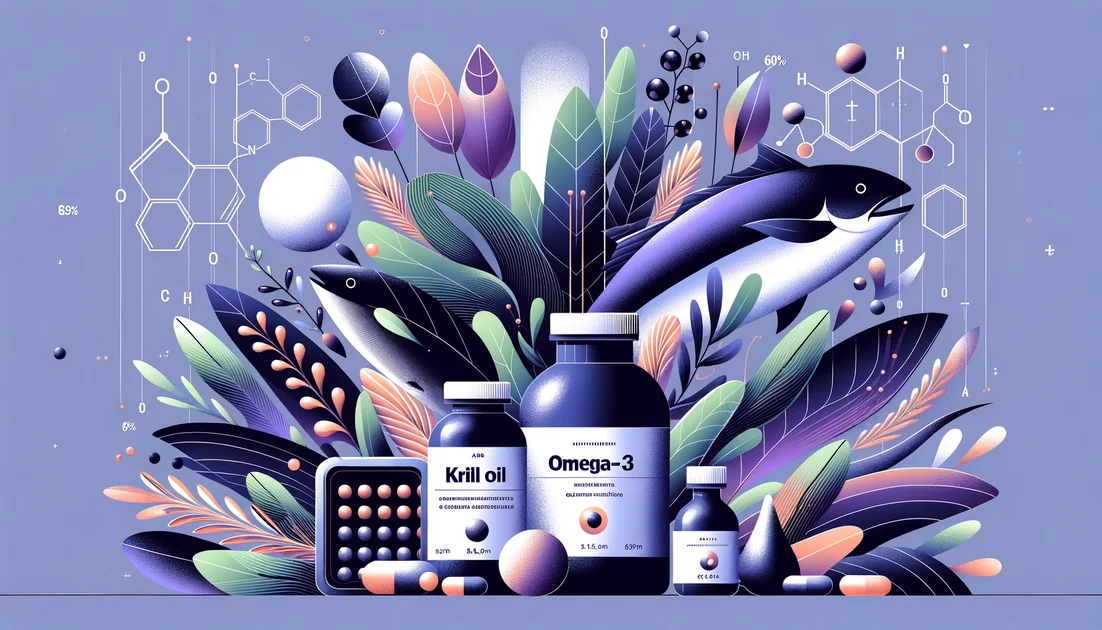
Top 10 Evidence-Based Recommendations
We reviewed 60+ randomized trials and 20+ meta-analyses on human inflammatory markers (CRP, IL-6, TNF-α) and pain/function outcomes. No affiliate fluff—just what lowers inflammation in people, with doses and timelines.
Quick Reference Card
Curcumin (bioavailable): 500–1,000 mg/day + piperine; 2–4 wks. [1] [4]
Boswellia (AKBA): 100–250 mg/day; 2–4 wks. [9]
Ginger extract: 1–2 g/day; 2–8 wks. [11]
Probiotics: 10–20B CFU/day; 4–12 wks. [15]
Show all 10 supplements...
Resveratrol: 500–1,000 mg/day ≥10 wks. [18]
Astaxanthin: 6–12 mg/day ≥12 wks. [22]
Green tea EGCG: 300–800 mg/day; 8–12 wks. [23]
Ranked Recommendations
#1Curcumin (bioavailable turmeric)Top Choice
Natural NSAID power—without most NSAID downsides
Dose: 500–1,000 mg curcuminoids/day with 5–20 mg piperine, or 500 mg phytosome (Meriva) 1–2×/day
Time to Effect: 2–4 weeks for pain; 4–10+ weeks for CRP
How It Works
Evidence
Joint pain, metabolic inflammation, people who can't tolerate NSAIDs
Piperine can raise levels of many meds (CYP3A4/P-gp). Discuss if on statins, calcium-channel blockers, cyclosporine, tacrolimus, etc. [5]
If using piperine combos, take meds at a different time. If sensitive to piperine, use a phytosome (Meriva) or other enhanced-delivery curcumin without piperine.
#2Omega-3s (EPA + DHA)Strong Alternative
Slow but deep calm for inflamed biology
Dose: 2–3 g/day combined EPA+DHA with meals; DHA-leaning formulas if targeting cytokines
Time to Effect: 8–12 weeks
How It Works
Evidence
Cardio-metabolic inflammation, rheumatoid/autoimmune joint pain
May slightly increase bleeding tendency at high doses—use caution with anticoagulants/antiplatelets.
For inflammatory cytokines, a DHA-heavier intake (≈1.5–2 g DHA/day within total 2–3 g EPA+DHA) can be advantageous. [8]
#3Boswellia serrata (AKBA-standardized)Worth Considering
The 5-LOX switch-off
Dose: 100–250 mg/day of 30% AKBA extract (e.g., 5-Loxin) or 300–500 mg Boswellia extract 2–3×/day
Time to Effect: 2–4 weeks
How It Works
Boswellic acids inhibit 5-lipoxygenase, curbing leukotriene-driven inflammation in joints and connective tissue.
Evidence
Knee/hand OA, tendon and connective-tissue irritation
Occasional GI upset. Check AKBA standardization.
Stacks especially well with curcumin—different enzyme targets (COX-2/NF-κB vs 5-LOX).
#4Ginger extract (standardized gingerols)
Kitchen spice with clinical bite
Dose: 1–2 g/day powder equivalent, or 500–1,000 mg/day concentrated extract
Time to Effect: 2–8 weeks
How It Works
Evidence
Metabolic inflammation, joint discomfort with meals
High doses may potentiate anticoagulants (bleeding risk).
Take with meals (bile-stimulated absorption) and pair with curcumin for faster symptom relief.
#5Quercetin
The cytokine cooler
Dose: 500–1,000 mg/day
Time to Effect: 4–8 weeks
How It Works
Evidence
People with metabolic syndrome features or chronic allergic/inflammatory overlap
May interact with some antibiotics or cyclosporine (theoretical).
Look for quercetin phytosome for better uptake if 500 mg/day does little after 8 weeks.
#6Multi-strain probiotics (Lactobacillus/Bifidobacterium)
Inflammation often starts in the gut—fix the signal at the source
Dose: 10–20 billion CFU/day for 8–12 weeks
Time to Effect: 4–12 weeks
How It Works
Gut-immune crosstalk: probiotics reduce endotoxin leakage and rebalance Treg/Th17, decreasing systemic cytokines.
Evidence
Metabolic or stress-linked inflammation, bloating with high-fat meals
Temporary gas/bloating; immunocompromised should consult a clinician.
Pick labeled strains with human data and delayed-release caps; consistency beats megadoses.
#7Resveratrol (trans-resveratrol)
Metabolic flame-dimmer
Dose: 500–1,000 mg/day for ≥10 weeks
Time to Effect: 10–12+ weeks
How It Works
Activates SIRT1/AMPK, indirectly inhibiting NF-κB and reducing hepatic/adipose cytokine output.
Evidence
Visceral fat, fatty liver, or cardiometabolic inflammation patterns
May interact with anticoagulants; GI upset in some.
Take with a fat-containing meal to improve absorption.
#8Astaxanthin (and carotenoids)
Membrane armor that calms CRP
Dose: 6–12 mg/day (astaxanthin) for ≥12 weeks
Time to Effect: 8–12+ weeks
How It Works
Potent singlet-oxygen quencher stabilizes membranes, indirectly reducing inflammatory signaling.
Evidence
UV/oxidative stress-linked inflammation, endurance training recovery
May tint stool/skin slightly orange (benign).
Natural (haematococcus) sources often have better isomer profiles.
#9Green tea catechins (EGCG)
Oxidative stress down—some inflammation signals too
Dose: 300–800 mg EGCG/day with food
Time to Effect: 8–12 weeks
How It Works
Evidence
People prioritizing oxidative stress and metabolic health with mild inflammation
Empty-stomach high-dose EGCG can irritate; rare liver enzyme elevations—take with meals.
Brewed tea counts; standardized extracts offer dosing consistency.
#10Spirulina (emerging)
Blue-green support with early CRP signals
Dose: 1–2 g/day
Time to Effect: 8–12+ weeks
How It Works
Phycocyanin exhibits COX-2 inhibition and antioxidant effects that can trim CRP in some groups.
Evidence
2025 meta-analysis suggests CRP reduction (WMD ≈ −0.55 mg/L) but with high heterogeneity; more robust trials needed. [26]
Adjunct in metabolic or cardio-metabolic inflammation when staples are dialed in
Allergy in those sensitive to algae; choose tested, toxin-screened brands.
Use as an add-on—not a replacement for the top tier above.
Common Questions
What supplement lowers inflammation the fastest?
For many, bioavailable curcumin + ginger shows pain relief in 2–4 weeks; CRP shifts usually take 8–12 weeks. [1] [11]
Best omega-3 dose for inflammation?
Aim for 2–3 g/day EPA+DHA; consider DHA-leaning if targeting cytokines. Expect 8–12 weeks. [6] [8]
Can I take turmeric and fish oil together?
Yes—they're complementary (COX-2/NF-κB vs pro-resolving mediators). Take both with meals. [1] [6]
Do I need black pepper with curcumin?
It boosts absorption ~20×, but it can interact with meds. Phytosome curcumin avoids piperine. [4] [5]
Will green tea lower my CRP?
Not reliably; it improves oxidative stress and IL-1β, with mixed CRP results. [23]
How long should I try a stack before judging?
Give it 8–12 weeks for biomarkers; pain may change sooner (2–4 weeks).
Timeline Expectations
Combination Strategies
Joint Relief Stack (dual-pathway)
Components:Curcumin (bioavailable) 500 mg twice daily + Boswellia (30% AKBA) 100–250 mg/day + Omega-3 (EPA + DHA) 2–3 g/day with meals
Curcumin hits NF-κB/COX-2; Boswellia targets 5-LOX; omega-3s add pro-resolving mediators—complementary mechanisms for pain/function and CRP. [1] [3] [6] [9]
Daily for 12 weeks; expect pain relief by week 2–4, CRP shift by week 8–12.
Metabolic Inflammation Reset
Components:DHA-leaning fish oil to reach ~1.5–2 g DHA/day within 2–3 g total EPA + DHA + Probiotics 10–20B CFU/day + Green tea catechins 300–600 mg EGCG/day with meals
DHA may better lower certain cytokines; probiotics reduce endotoxin signaling; catechins improve oxidative tone and IL-1β. [8] [15] [23]
12 weeks; titrate fish oil with meals; take probiotics consistently; EGCG split 2–3 doses.
Fast Calm (when flaring)
Components:Curcumin (bioavailable) 500 mg + Ginger extract 500–1,000 mg with meals
Both act quickly on COX-2/NF-κB and show short-term drops in inflammatory markers and pain. [1] [11]
Use for 2–4 weeks during flares; then transition to a maintenance plan.
You might also like
Explore more of our evidence-led investigations, comparisons, and guides across every article style.

Nature Made
Nature Made: Testing powerhouse with mid-tier transparency and occasional quality stumbles

Fish Oil (EPA+DHA from fish oil) vs Krill Oil (Antarctic krill oil)
For most people seeking proven heart benefits or triglyceride lowering, choose fish oil (or prescription EPA) because outcomes data are strongest. Pick krill oil if you prefer smaller caps and potentially gentler GI feel, knowing EPA+DHA per capsule is usually lower. [4][6][1]

Best for joint pain
UC-II (undenatured type II collagen) — 40 mg daily

NAD+
A century ago, a mysterious rash, diarrhea, and dementia swept through the American South. Doctors blamed germs—until a public-health maverick fed prisoners a corn-heavy diet and proved the real culprit was a missing nutrient that fuels every cell's engines: the vitamin precursor to NAD+. Today, the same molecule sits at the center of a different mystery—can carefully raising NAD+ help us age better without overpromising? [3][4]


Tocotrienols
The stealthier cousins of vitamin E—built with springy tails that move differently in cell membranes and behave differently in your body.


















